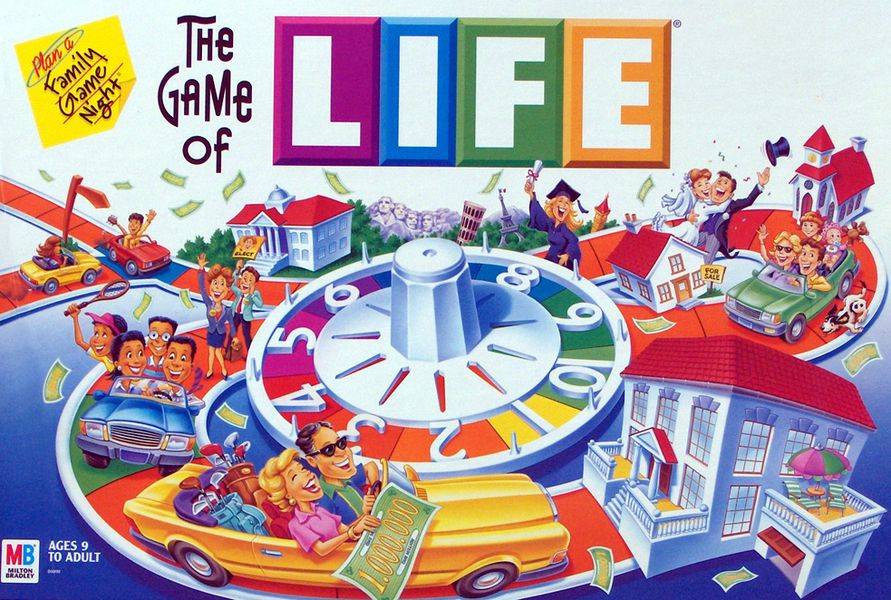The Game of Life (1960) Board Game
The Game of Life, also known simply as Life, was created by Reuben Klamer and Bill Markham and first published by Milton Bradley in in 1960. It is a classic board game that simulates a person’s journey through life, from college to retirement. The game has undergone several updates and revisions over the years, but its core gameplay mechanics have remained largely unchanged.
Game Components of The Game of Life
How To Setup The Game of Life
Setting up the game involves placing the game board in the middle of the playing area, distributing the money and other financial assets, and each player choosing a car pawn. Players start with one peg in their car and a set amount of money. The game components such as insurance policies, stock certificates, and promissory notes are also placed within reach of all players.
Gameplay Mechanics and Game Objective
Player Experience
The Game of Life offers a unique blend of strategy and luck, simulating major life events that players must navigate. The game’s three-dimensional board and integral plastic spinner add to the interactive experience. Players must make financial decisions, take risks, and adapt to unexpected life events, making the game both entertaining and educational.
Pros
Cons
Personal Thoughts on The Game of Life
The Game of Life is ideal for families and individuals looking for a classic board game experience that combines luck and strategy. While it has its drawbacks, such as a high element of chance and some outdated elements, it remains a beloved game that teaches valuable lessons about life and financial management. It is particularly suitable for those who enjoy nostalgic games and are looking for a fun, interactive way to spend time with family and friends.
We are supported by our audience. When you purchase through links on our site, we may earn an affiliate commission, at no extra cost for you. Learn more.

